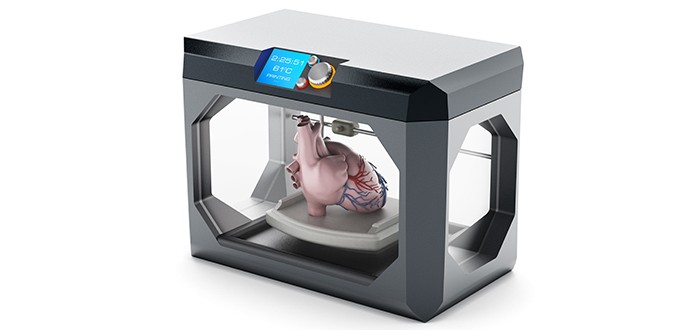It might one day be possible to replace that mesothelioma-covered lung or abdomen lining of yours with one that’s brand-new clean and disease-free.
Researchers at Wake Forest Baptist Medical Center have moved a step closer to making such a remedy for mesothelioma a reality.
They’ve been experimenting with a 3-D printer that they hope to use to eventually print out replacement tissues for patients with cancer and other diseases.
The tissues they want to print aren’t artificial. These are living tissues that grow exactly like the ones they’ll be replacing.
This may sound like the stuff of science fiction, but it’s not. Writing in the journal Nature Biotechnology, the Wake Forest team said that 3-D printing of living tissues can be done.
They themselves did it with the help of an advanced custom-built 3-D printer. They printed ear, bone and muscle structures. Then they implanted them into lab animals.
The researchers reported that these structures then developed tissue plus blood vessels. They said these tissues had the same strength and function characteristics necessary for them to work in humans.
3-D Printing Helps Mesothelioma Care
One of the researchers said the 3-D printer “is an important advance in our quest to make replacement tissue for patients.”
He added that, “[w]ith further development, this technology could potentially be used to print living tissue and organ structures for surgical implantation.”
The military is paying for this research, the Wake Forest team indicated. The Pentagon is hoping this research will lead to better treatment of battlefield injuries.
Of course, mesothelioma is an injury sustained on a battlefield all to itself — namely, your body. So whatever replacement tissues are printed as replacements must be able to work correctly in your body.
That’s just one of a number of hurdles the researchers are trying to jump over with this futuristic treatment concept.
Among the biggest hurdles is the printer technology itself. 3-D printers are nothing new. But they manufacture things either by jetting, extrusion or laser-induced forward transfer processes.
None of these are adequate to generate living tissue structures. So the Wake Forest team has spent the last decade inventing a 3-D printer called the Integrated Tissue and Organ Printing System (ITOP).
3-D Integrated Tissue and Organ Printing System
ITOP works by blending biodegradable materials with water-based gels. The biodegradable materials act as a frame to support the gels. The gels contain starter cells from which the tissue will later grow.
The trick is in getting the printed output to stay alive long enough for surgeons to implant it in a body. The Wake Forest team deals with this by infusing the gel with nutrients that help keep the cells going.
They also make sure the printed output contains microchannels. These make it possible for the body’s own nutrient supply to flow through the printed structure.
The nutrient flow also helps keep the cells going. In time, the cells develop blood vessels and are fine from that point forward.
The researchers are naturally pretty excited about all this. But they acknowledge that what they’re dealing with is little more than the early-stage science.
They know that more testing will be needed to show whether replacement tissue made by 3-D printing is truly viable.
If it turns out to be viable, it will represent a huge breakthrough with major ramifications for mesothelioma patients.

